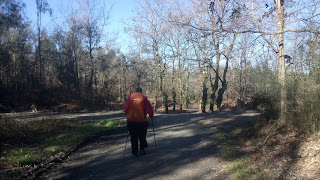After having attended the morning mass in Leon Cathedral I made my way to the Museo Panteon attached to St Isodore's Basilica. Here are buried a large number of Spanish royalty, a nobility fest if ever there was. On arrival I was told apologetically by the man on the front desk that their only English voice guide was broken, so I may not want to visit. I said I would like too despite this. He gave me an A4 sheet with a little information on and as I went to enter he picked up his walkie talkie and gabbled away in Espagnol. A moment later a young lady entered the room and said to me "English", "si" ," come with me" . It then turned out that I had a personal guided tour in good English, with some queries about vocabulary from her, and some input from me about some of the ecclesiastical exhibits. It was absolutely brilliant. As were many of the exhibits, especially the 10th century chalice and the 14th century ceiling paintings. No photo's were permitted, but I have a couple of postcards. At the end my guide confided in me that she had practised her English tour but I was the first person that she had performed it for. I congratulated her and thanked her. I reflected afterwards that I could have walked away when I was told the voice guide was broken. I am so glad I did not.
The second surprise of the day was that on this international day of the woman around 8 million Spanish were taking part, many of them in a 24 hour strike that started at midday. The cancellation list on the arrival and departure board at Leon Station was not encouraging and I began to wonder what I would do if my train too was cancelled. Mercifully it wasn't and I got to Astorga on time having enjoyed a chat on the train with a pilgrim from Texas and another from Alabama.
Just a few more pictures of Leon to enjoy...
 |
| St Martin's Church |
 |
| Gaudi's Casa Bottini |
 |
| Hydro electric power station as a demonstration centre on the main river. |






